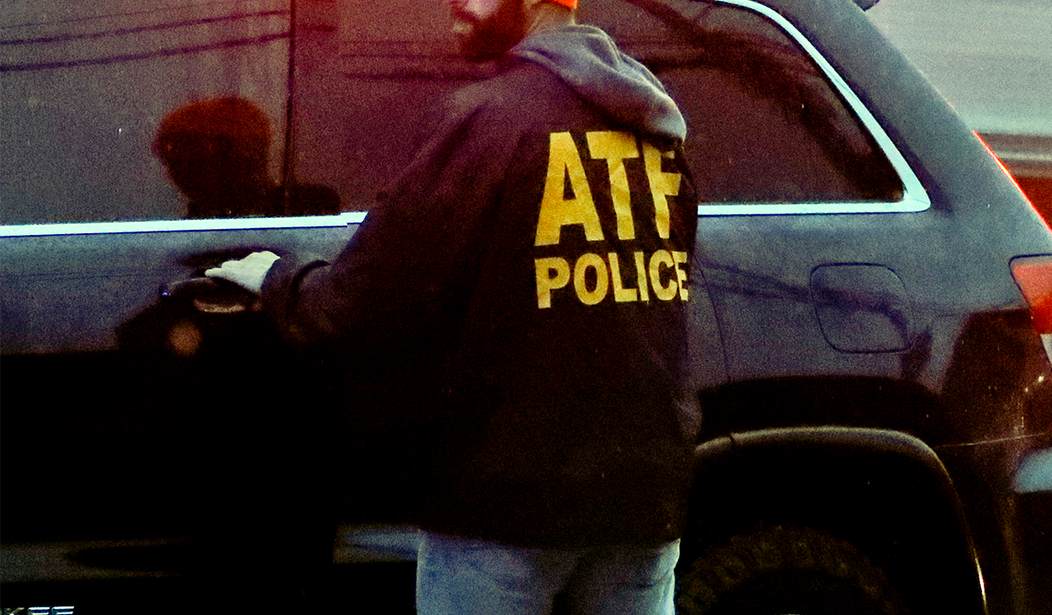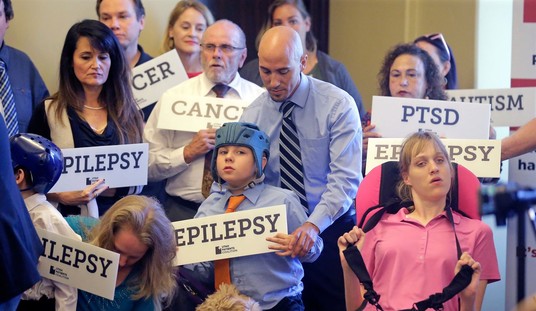When the National Shooting Sports Foundation’s Larry Keane joined me on Cam & Co last week, he said he anticipated the ATF’s final rule on pistol-stabilizing braces would be released right around the start of SHOT Show. Well, the firearm industry trade show kicks off next week in Las Vegas, and industry attendees now have plenty of reading material on their flight thanks to the ATF’s release of the rule on Friday.
While the final rule, formerly titled Factoring Criteria for Firearms with Stabilizing Braces, won’t be considered officially in effect until it’s published in the Federal Register early next week, anyone who wants is welcome to peruse the whopping 291 pages. For those who’d prefer a brief summary, he gist of it is that many stabilizing braces could now be considered by the ATF as something that remakes your pistol into a short-barreled rifle; ownership of which requires registration under the National Firearms Act. In his announcement, ATF Director Steve Dettelbach invoked Al Capone and Prohibition-era gangsters, though the new rule is far more likely to ensnare law-abiding citizens than mobsters.
“This rule enhances public safety and prevents people from circumventing the laws Congress passed almost a century ago. In the days of Al Capone, Congress said back then that short-barreled rifles and sawed-off shotguns should be subjected to greater legal requirements than most other guns. The reason for that is that short-barreled rifles have the greater capability of long guns, yet are easier to conceal, like a pistol,” said ATF Director Steven Dettelbach. “But certain so-called stabilizing braces are designed to just attach to pistols, essentially converting them into short-barreled rifles to be fired from the shoulder. Therefore, they must be treated in the same way under the statute.”
There were more than 237,000 public comments submitted during the 90-day window when input was received, most of it in opposition according to the ATF.
Of the comments reviewed, nearly 20,000 comments expressed support for the proposed rule, of which just under 18,000 were submitted by individuals as form letters, i.e., identical text that is often supplied by organizations or found online and recommended to be submitted to the agency as a comment. There were over 217,000 comments opposed to aspects of the rule. Approximately 96,000 comments were submitted as form letters and, of these, just over 25,000 were submitted using the National Association for Gun Rights (“NAGR”) form letter.
Among those sending in their personalized objections was the NSSF itself, which noted that since 2012 the ATF has taken the position that the attachment of stabilizing braces by themselves didn’t turn a firearm into a short-barreled rifle. Instead, as the NSSF wrote in its comments, the ATF has variously said that the gun owner “remakes” the pistol into a short-barreled rifle if they lift it to their shoulder (2015), but that “incidental, sporadic, or situational ‘use’ of an arm-brace” as a shoulder stock did not constitute a ‘redesign’ and would ultimately not fall under the NFA because that is “not consistent with the intent of the NFA.” (2017). As the organization concluded its comments in opposition:
Efforts by ATF to again change the factoring criteria for firearms with Stabilizing Braces are arbitrary, capricious, abuse of discretion, and otherwise not in accordance with law. The Proposed Rule exceeds ATF’s statutory authority. For these, and other reasons, the Proposed Rule violates the Administrative Procedures Act. To the extent a violation the Proposed Rule would constitute a criminal offense the rule would exceed ATF’s statutory authority and would be unconstitutional and a violation of the Separation of Powers.
For almost a decade the Industry in plain sight of ATF has operated in good faith that a pistol with a “Stabilizing Brace” does not fall under the regulation of the NFA. It is entirely unclear how ATF came to the finalized list of vague and arbitrary criteria enumerated in Worksheet 4999. The worksheet itself is an amalgamation of historically inconsequential factors resulting in a scoring system designed for users to reliably classify their firearm under the NFA. The worksheet’s obvious intent is to precipitate the predetermined and seemingly desired result of SBR classification for all braced pistols.
On page 71 of the Final Rule released by the ATF, the agency acknowledges “inconsistencies” with previous guidance regarding stabilizing braces, but dubiously claims that this latest rule makes things clearer.
Nevertheless, the Department disagrees that any prior inconsistencies or changes by ATF make this rule arbitrary and capricious under the APA. Despite inconsistencies in ATF’s prior classifications, each classification letter referenced ATF’s practice of considering the physical design characteristics or features when looking at a “stabilizing brace” device on a firearm.
The Department acknowledges that this rule is a change in position from some of ATF’s previous classifications or positions, but the intent of this rule is to resolve prior inconsistencies and ensure consistent application of the statutory definition of “rifle” to firearms equipped with “stabilizing braces” or other rearward attachments.
Or it’s just another inconsistency from the agency; and one that goes beyond the authority granted to it by the Administrative Procedures Act. The Fifth Circuit Court of Appeals recently held that the ATF violated the Act when it imposed a bump stock ban in 2019, and retroactively declaring millions of lawfully possessed firearms equipped with stabilizing braces to be presumably illegal short-barreled rifles seems like a similar overreach to me.
I reached out to Mark Oliva, head of public affairs at NSSF, shortly after the DOJ dropped its press release. Oliva replied that the organization “is not surprised by the Final Rule set forth by the ATF” and noting their previous objections to the proposal. Oliva says the NSSF is carefully reviewing the hundreds of pages of the Final Rule, and adds that the issue is “certain to be a hot topic for the ATF at next week’s SHOT Show”.
That won’t be the only place where people are talking about the new rule. My guess is there’ll be several federal courthouses and quite a few attorneys discussing the issue in the coming weeks, starting with a request to block the law’s 120-day registration requirement from taking effect and potentially turning several million Americans into felons for something they lawfully purchased and (as of today) legally own.








Join the conversation as a VIP Member